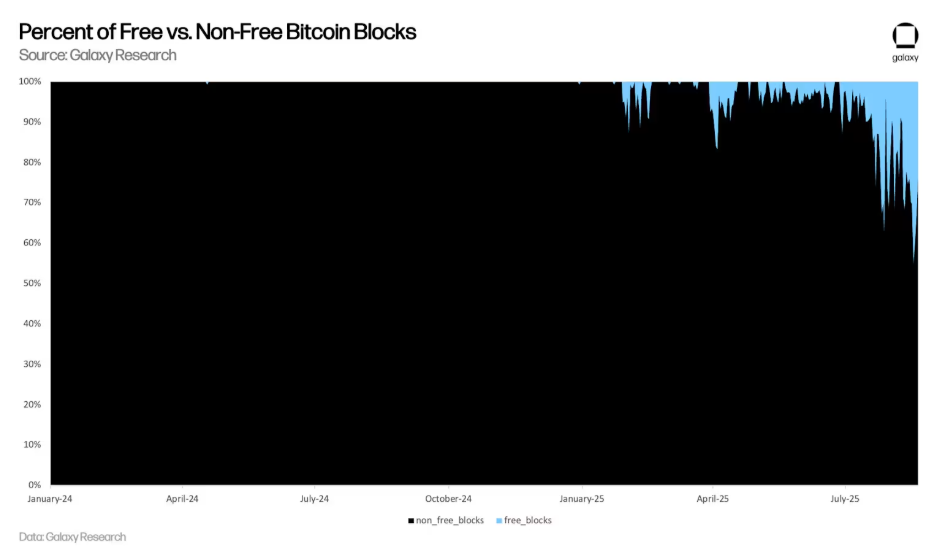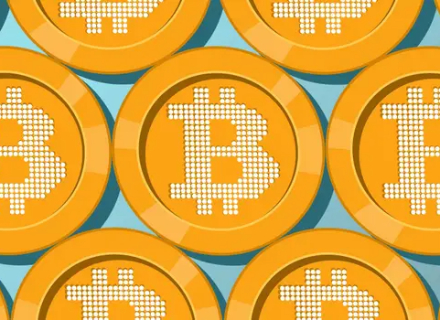Bitcoin Fees Hit Satoshi-Era Levels as Blockspace Demand Evaporates
Analysts warn that Bitcoin's subdued fee market could undermine miner revenues and raise long-term questions about the network’s security model.
Bitcoin transaction fees have fallen to their lowest point in more than a decade, highlighting a major shift in how the network is being used.
Glassnode data shows that the 14-day simple moving average of daily fees now sits at 3.5 BTC, a level not seen since 2011 when the protocol was still in its early adoption phase.
Why is Bitcoin’s Network Fee Declining?
Weaker demand for blockspace has driven the decline, reflecting Bitcoin’s broader shift in purpose. Investors now hold the asset primarily as a store of value instead of using it as a payment rail.
On-chain data confirms this shift. Public companies such as Strategy have aggressively expanded their Bitcoin holdings in recent months, positioning the asset as digital capital rather than a medium for everyday transactions.
For context, Galaxy Digital noted that Bitcoin’s mempool activity is lacking as the percentage of not-full blocks has spiked to nearly 50% at times in the past few months.
“These blocks fail to reach the maximum weight limit (4,000,000 weight units) despite room to include additional transactions. In short, the mempool, Bitcoin’s waiting room for pending transactions, is frequently empty, and when it isn’t, it’s full of transactions that don’t need to pay high fees to get processed quickly,” Galaxy pointed out.
 The Percentage of Free Bitcoin Blocks is Rising. Source: (
)
The Percentage of Free Bitcoin Blocks is Rising. Source: (
)
The firm continued that after the 2024 halving reduced block rewards to 3.125 BTC, miners had expected transaction fees to offset lost revenue. Instead, the opposite has happened.
According to the firm, a subdued fee market makes it harder for smaller operators to remain profitable. This trend raises questions about the long-term economics of Bitcoin’s security model.
Beyond these technical changes, the current market structure also plays a role in the Bitcoin network fees cut.
According to Galaxy, the growth of custodial products such as exchange-traded funds and institutional derivatives has reduced the need for investors to transact directly on-chain.
Moreover, retail traders seeking high-volume activity — particularly in meme coin markets — are moving to cheaper, faster blockchains like Solana. These networks offer smoother execution than Bitcoin’s Runes ecosystem.
“If more BTC volume continues to migrate to ETFs, custodians, and fast alt-L1s, the core network risks becoming a settlement layer without sufficient settlement activity,” Galaxy warned.
Meanwhile, this development arrives at an interesting time when the blockchain network is enjoying significant adoption from institutions and governments globally.
As a result, Bitcoin’s price has climbed to a new all-time high of more than $124,000. There are also now increased projections that its value could reach above $1 million.
Disclaimer: The content of this article solely reflects the author's opinion and does not represent the platform in any capacity. This article is not intended to serve as a reference for making investment decisions.
You may also like
Mars Morning News | The Federal Reserve is expected to cut interest rates on Wednesday, S&P Global assigns a "B-" credit rating to Strategy
S&P Global has assigned a "B-" credit rating to bitcoin treasury company Strategy, classifying it as junk debt but with a stable outlook. The Federal Reserve is expected to cut interest rates by 25 basis points, with a possible split in the voting. The Hong Kong Securities and Futures Commission has launched a tender for a virtual asset trading monitoring system. Citi is partnering with Coinbase to explore stablecoin payment solutions. ZEC surged significantly due to halving and privacy topics. Summary generated by Mars AI. The accuracy and completeness of this summary are still being refined and updated by the Mars AI model.

BTC Volatility Review (October 6 - October 27)
Key indicators (4:00 PM Hong Kong time on October 6 -> 4:00 PM Hong Kong time on October 27): BTC/USD -6.4...

Cathie Wood warns: As interest rates rise next year, the market will be "chilled to the bone"
AI faces adjustment risks!
2025 Trading Guide: Three Essential Trading Categories and Strategies Every Trader Must Know
Clearly identify the type of transaction you are participating in and make corresponding adjustments.
